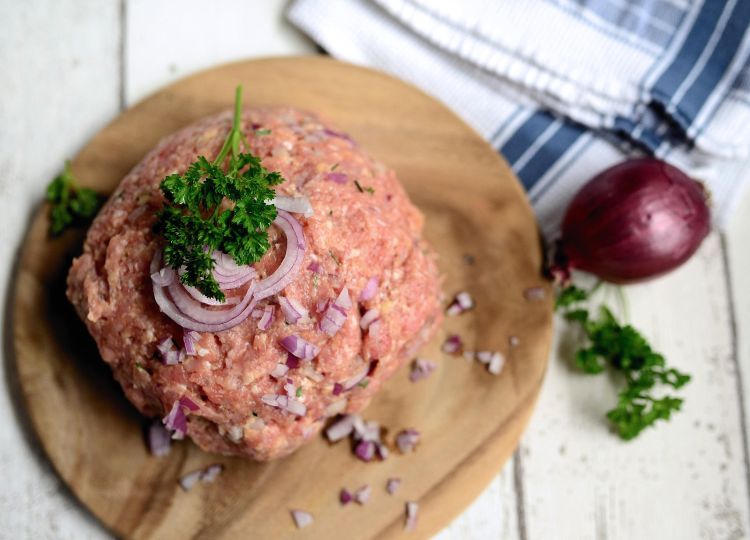Cooking ground turkey to the proper temperature is a must
Ground turkey can be a healthier alternative to red meats, and it is important to cook it to the proper internal temperature of 165 degrees Fahrenheit.

Ground turkey can be a healthier alternative to red meat, and it is important to cook it to the proper internal temperature of 165 degrees Fahrenheit.
Health Benefits
The American diet today is high in saturated fat, which is a type of fat that can stay in the arteries and potentially lead to heart disease. Saturated fat comes from animal products. When choosing a meat to eat, it is best to pick leaner meats with less fat.
Turkey is considered a leaner meat and is a good option for animal protein in your diet. Turkey has fewer calories and saturated fat than red meat. Eating meals lower in saturated fats can help reduce blood cholesterol levels and promote cardiovascular health. Try MSU Extension’s recipe for one pan turkey skillet.
Types of Ground Turkey
- Ground turkey breast (99% lean): This is the leanest option, made entirely from turkey breast meat.
- Ground turkey (93% lean): This option usually includes a mixture of turkey breast and thigh meat, resulting in a slightly higher fat content.
- Ground turkey (85% lean): This variety contains a higher proportion of dark meat and fat, leading to a richer flavor but also a higher calorie and fat count.
Choosing the leaner options is what makes ground turkey a better choice when it comes to lowering the amount of saturated fat in your meals.
Cooking to the Proper Temperature
When cooking turkey in any form, it is important to cook it to the proper internal temperature of 165 degrees Fahrenheit. Use a calibrated thermometer instead of relying on the color of the meat to ensure it has been cooked properly. Cooking ground turkey to the proper internal temperature is especially important due to the bacteria that are introduced into the meat mixture. Bacteria found inside the turkey get mixed into the ground meat during processing. Ground turkey has been shown to harbor the bacteria Salmonella, staphylococcus aureus, Campylobacter jejuni, and Listeria in studies conducted by the United States Department of Agriculture (USDA). These bacteria can lead to severe foodborne illnesses, especially in young children, older adults and individuals with compromised immune systems.
Cooking to the proper internal temperature is important in killing these bacteria. In large lots, turkeys are often given antibiotics to prevent illnesses before they get sick. This practice can lead to resistant bacteria, per the FDA. As consumers, we are given different choices of ground turkey in the supermarket. On the label, if a turkey has not been treated with antibiotics, the turkey may be labeled as “organic” or “no antibiotics.” If the label says “USDA Process Verified,” this means the USDA has verified that the producer is doing as it claims. The term “natural” means it is minimally processed with no artificial ingredients or added color. It does not necessarily mean it is antibiotic free.
Summary
Ground turkey is a healthy animal protein choice because it offers lower fat options. Always handle raw meat with care. Keep all meat refrigerated below 40 degrees Fahrenheit before cooking. Follow the FDA’s guidelines and cook all meats, including ground turkey, to the proper internal temperatures. Keep all raw meats separate from cooked and ready-to-eat foods. If you are concerned about the use of antibiotics in turkey, read the labels and look for words such as “organic”, or “no antibiotics used”. For more information on keeping your food safe, visit the Michigan State University Extension website.



 Print
Print Email
Email




